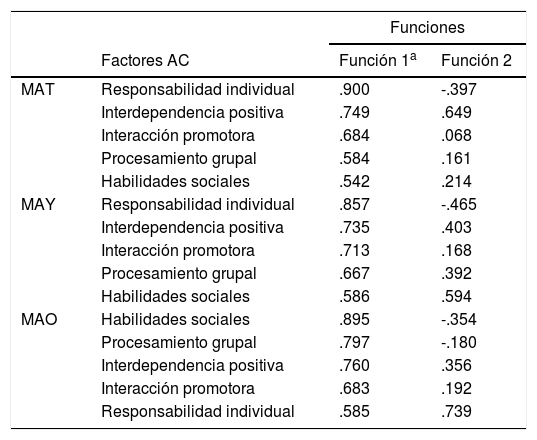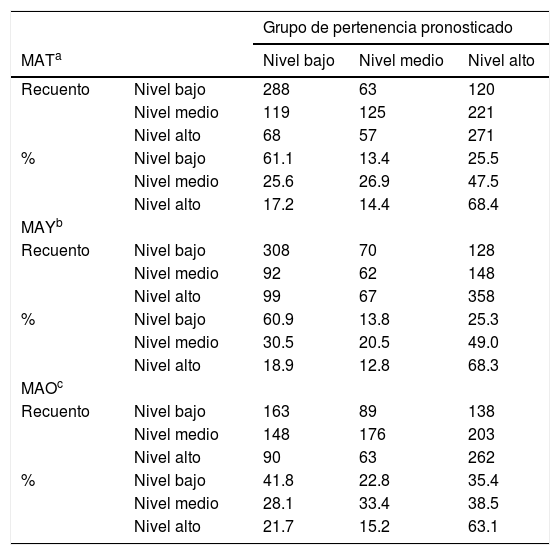Los objetivos de este estudio han sido dos: (a) analizar si los factores del aprendizaje cooperativo discriminan las diferentes metas de aproximación del modelo de metas de logro 3×2 y, en consecuencia, (b) valorar el papel que pueda desempeñar la etapa educativa. Participan un total de 1292 estudiantes (660 hombres y 632 mujeres) pertenecientes a las etapas educativas de primaria (580), secundaria (531) y bachillerato (181), con edades comprendidas entre los 10 y los 19 años (M=13.05, DT=2.45). Se administran los cuestionarios CAC y CML 3×2-EF como instrumentos de recogida de datos. Los resultados del análisis discriminante han mostrado que los factores del aprendizaje cooperativo son predictores de las metas de aproximación, destacándose el factor responsabilidad individual para las metas de aproximación-tarea (MAT) y aproximación-yo (MAY), siendo este mismo el menos discriminante para la meta de aproximación-otros. Además, los resultados del análisis de árbol de decisiones indican que en educación primaria, educación secundaria y bachillerato, los estudiantes con el nivel más alto en MAT y MAY son aquellos que puntúan más elevado en responsabilidad individual. Estos hallazgos reflejan la importancia de la responsabilidad individual para que el alumnado de educación física muestre patrones más adaptativos, como lo son MAT y MAY.
The aim of the present study is two-fold: (a) to analyze whether the cooperative learning factors discriminate the different approach goals of the 3×2 achievement goals model and, consequently, (b) to assess the role that can play educational stage. A total of 1292 students participate (660 men and 632 women) belonging to the educational stages of primary (580), secondary (531) and baccalaureate (181), with ages between 10 and 19 years (M=13.05, SD=2.45). The CAC and CML 3×2-EF questionnaires are administered as data collection instruments. The results of the discriminant analysis have shown that the cooperative learning factors are predictors of the approach goals, highlighting the individual responsibility factor for the task-approach goals (TAG) and self-approach goals (SAG), this being the least discriminant for the other-approach goals. In addition, the results of the decision tree analysis indicate that in primary education, secondary education and baccalaureate, the students with the highest level in TAG and SAG are those that score the highest in individual responsibility. These findings reflect the importance of individual responsibility so that physical education students show more adaptive patterns such as TAG and SAG.











